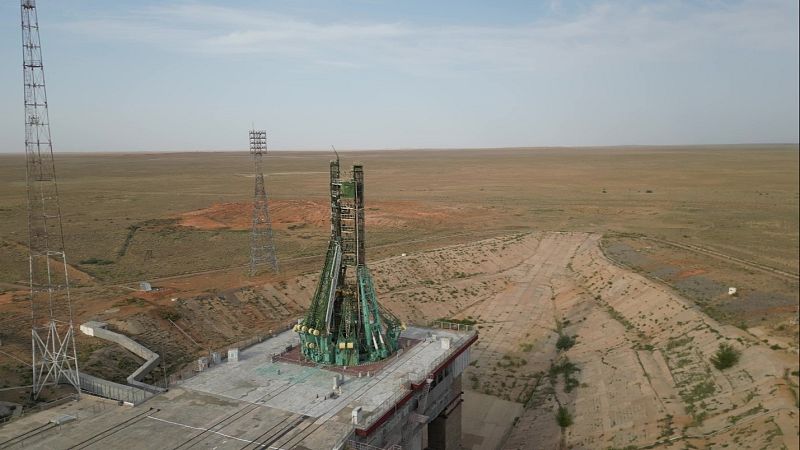Kazakhstan’s Vision for Baikonur Cosmodrome as a Space Tourism Destination
Kazakhstan has taken significant steps to transform the historic Baikonur Cosmodrome into a thriving space tourism hub. While Russia continues to lease the facility, the Kazakh government has returned over fifty decommissioned sites to the country, with plans to develop them into a vibrant tourism ecosystem. This initiative aims to attract visitors year-round, not just for rocket launches but also for immersive experiences that connect people with the history of space exploration.
One of the key sites in this transformation is Gagarin’s launchpad, the oldest and most famous launch pad at Baikonur. It was here that Yuri Gagarin made history on April 12, 1961, as the first human to journey into space aboard Vostok 1. The government has handed over oversight of this iconic site to its national aerospace committee company, which will manage funding, maintenance, and general operations. This move paves the way for the development of tourism around the launchpad, including immersive experiences, hotels, glamping facilities, and a children’s camp.
The government finalized the transfer of the site to Kazakhstan in June, marking a significant milestone in the country’s efforts to promote space tourism. According to Kairat Nurtay, the Special Representative of the President of the Republic of Kazakhstan at the Baikonur Complex, “the Kazakh side can turn it into a tourist site — a place where visitors can come, explore, and connect with the history of the very launchpad from which the first human journeyed into space, from Kazakh soil.”
A New Era for Space Tourism
The tourism concept for Baikonur is set to be approved in September, with the first step involving inspections of decommissioned facilities for safety. To preserve its cosmic heritage, iconic sites will be reconstructed as part of an open-air museum. This includes Gagarin’s launchpad and the Assembly and Fueling Complex, once used for the final preparation of the powerful Energia rocket and Buran shuttle, a spaceplane designed as a response to the US Space Shuttle program.
Plans also include building essential infrastructure such as hotels, glamping areas, visitor centers with retail zones, restaurants, and a children’s camp. Baubek Oralmagambetov, Chairman of the Aerospace Committee, emphasizes that “space is, above all, a dream for humanity — a dream to explore galaxies and discover new planets.” He adds that “this kind of tourism is a powerful source of inspiration, especially for children. It helps them learn the history of space exploration, become motivated by its achievements, and strive to study harder and set higher goals.”
Experiencing Rocket Launches
Last year, Kazakhstan installed a metal-structured yurt at a viewing platform near Baikonur’s 31st launch pad, offering tourists a unique chance to watch rocket launches up close. So far this year, visitors have witnessed three launches, with three more scheduled before December. The most recent was a Russian cargo mission, where a Soyuz rocket lifted off at 12:32 am on July 4, carrying the unmanned Progress 92 spacecraft with nearly three tonnes of food, fuel, and supplies for the International Space Station.
Authorities estimate that with expanded lodgings, Baikonur could welcome up to 50,000 visitors a year by 2029 — a fivefold increase from current figures. Leila Bakytova, Chief Manager of the Management Board Chairman’s Office at Kazakh Tourism, outlines four areas of ground-based space tourism being developed: educational tours, cultural and discovery-based tours, event-driven tourism, and adventure and active tours, possibly in the form of large-scale road trips.
Interactive Experiences and Future Developments
Experts believe the potential for space tourism in Baikonur is just beginning to be tapped. Ideas for interactive exhibits and hands-on simulations are already in the works. Rinat Kutdussov, a museum expert, envisions a future where visitors can witness a rocket launch with their own eyes and even simulate the experience of launching a rocket from the control center.
“Even if it’s on screens or in virtual form, they could still take part — immersed in the soundscape, surrounded by multimedia effects, perhaps even observing astronauts, robots, or mission teams at work,” he explains. “The idea is to make them feel like part of the crew.”
Aligning Tourism with Space Ambitions
Baikonur’s growing tourism ambitions align with Kazakhstan’s broader space strategy. One of its key goals is to commercialize Soyuz rocket launches by 2028 using upgraded local infrastructure as part of the Russian-Kazakh Baiterek project. The first test flight is expected at the end of this year, with subsequent test launches planned for 2026 and 2027, followed by commercialization in 2028.
Prime Minister Olzhas Bektenov has confirmed that construction of the Baiterek Space Rocket Complex and development of the Soyuz-5 rocket remain on schedule. According to Roscosmos, the rocket will launch from Baikonur in December this year.
For now, rocket launches remain Baikonur’s main tourist attraction. Officials say the transformation is only beginning — but it’s designed to inspire everyone, from curious schoolchildren to lifelong space enthusiasts.
